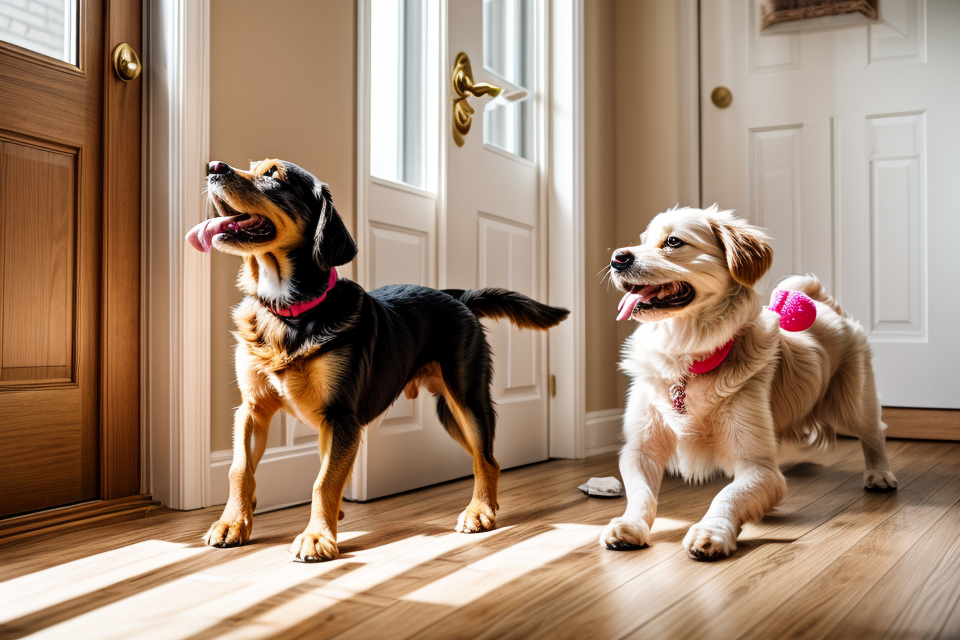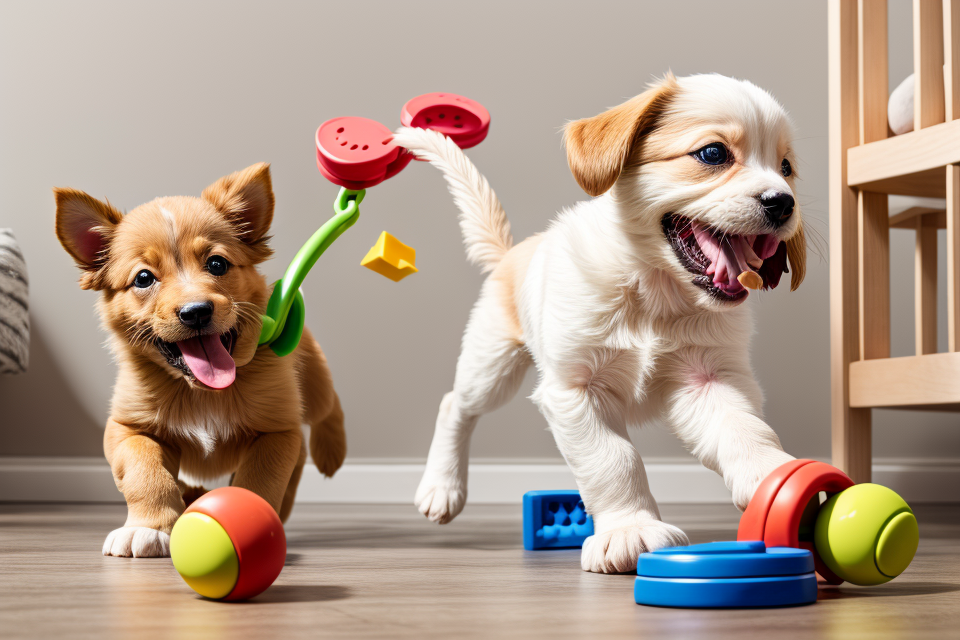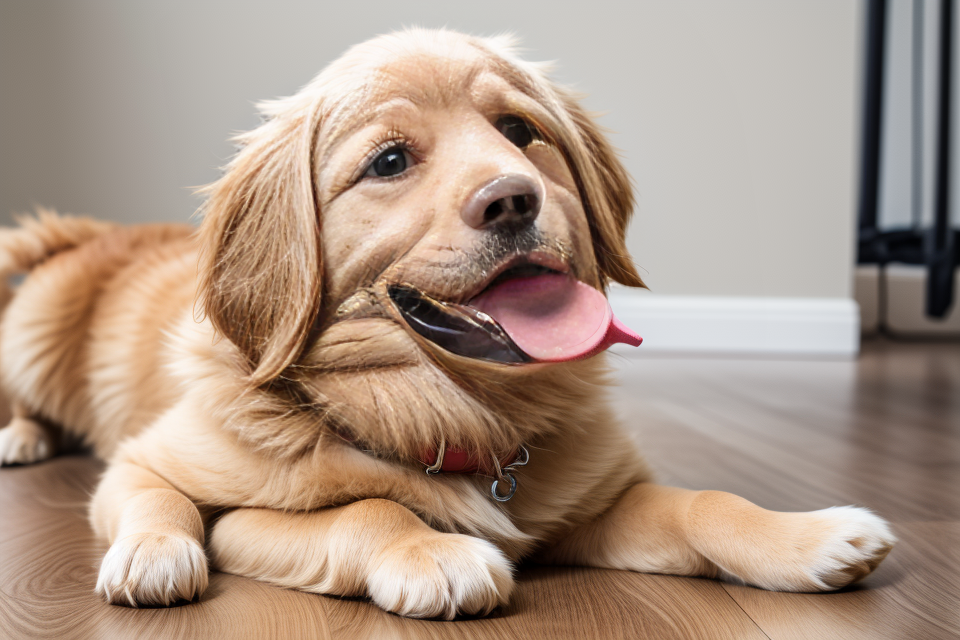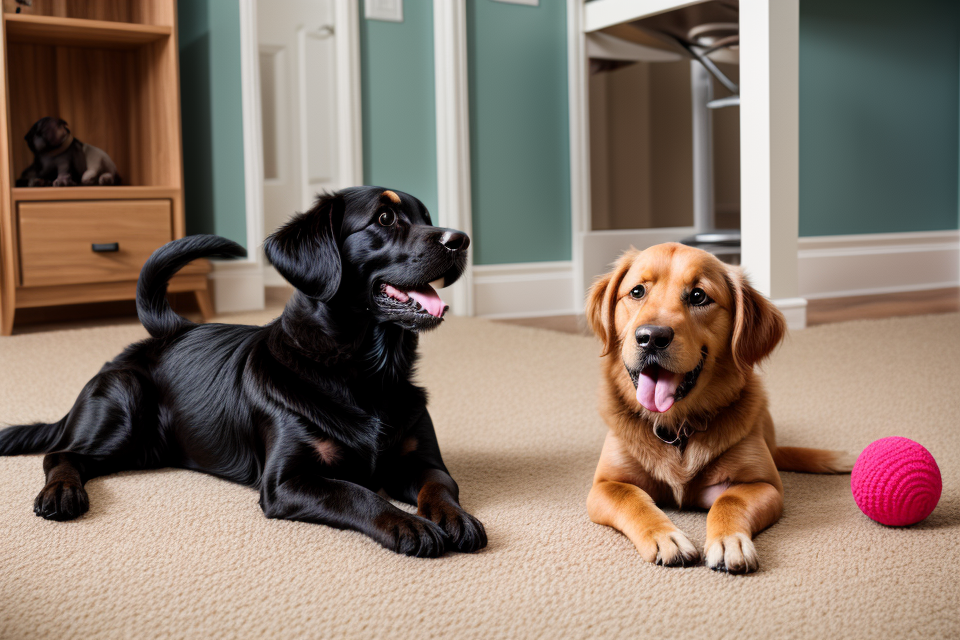Is your furry friend more interested in chasing a toy than sitting still for treats? If so, you’re in luck! Training your dog with toys instead of treats can be a fun and engaging way to teach them new tricks and behaviors. In this article, we’ll explore the benefits of using toys as rewards, and provide tips on how to make the most of this training method. So whether your pup is a toy-lover or a treat-seeker, get ready to add some playtime to your training sessions!
Benefits of Using Toys for Dog Training
Encourages Positive Reinforcement
Using toys as rewards during dog training sessions is an excellent way to encourage positive reinforcement. This method works by reinforcing desired behaviors in dogs and helping them associate those behaviors with specific actions. By doing so, dogs learn to perform specific actions that lead to the release of the toy. Positive reinforcement is a powerful tool that can help dogs develop good behavior habits, making it easier for owners to train their pets.
Positive reinforcement can also help to reduce the likelihood of undesirable behaviors in dogs. By consistently rewarding desired behaviors, dogs will be more likely to repeat those behaviors in the future. Over time, this can help to replace unwanted behaviors with more desirable ones, making it easier for owners to manage their pets’ behavior.
Another benefit of using toys as rewards during dog training is that it can help to maintain a healthy weight in dogs. Many owners use treats as rewards during training sessions, but these treats can often be high in calories and fat. By using toys instead of treats, owners can help to ensure that their dogs are not consuming excessive amounts of calories or fat, which can lead to weight gain and other health problems.
Finally, using toys as rewards during dog training provides a variety of rewards for dogs. While treats can be effective rewards, they can become monotonous for dogs after a while. By providing a variety of toys as rewards, owners can keep their dogs engaged and interested in training sessions, making it easier to achieve desired behavior changes. Additionally, using a variety of toys can help to prevent dogs from becoming bored with training sessions, which can lead to a lack of interest in the training process.
Choosing the Right Toys for Training
Selecting Durable Toys
When selecting toys for training your dog, it is important to consider their durability. This will ensure that the toys can withstand the wear and tear of regular play and training sessions. Here are some factors to consider when selecting durable toys for your dog:
Materials to Consider
The materials used to make the toys can affect their durability. Some materials that are known for their durability include:
- Rubber
- Plastic
- Nylon
- Canvas
- Rope
When selecting toys made from these materials, look for those that are designed to be chew-resistant and indestructible.
Durability Factors
In addition to the materials used, there are several other factors to consider when selecting durable toys for your dog. These include:
- Size: The size of the toy should be appropriate for your dog’s size and strength. A toy that is too small or too large can be easily destroyed by your dog.
- Design: The design of the toy can also affect its durability. Look for toys with sturdy construction and no loose parts that can come off and pose a choking hazard.
- Usage: Consider how often your dog will use the toy and how rough they will be with it. If your dog is very active and plays rough, you may want to select toys that are designed to withstand rough play.
By considering these factors, you can select durable toys that will provide your dog with hours of fun and entertainment, while also reinforcing good behavior during training sessions.
Selecting Toys for Different Training Goals
When selecting toys for training your dog, it’s important to consider the specific training goals you have in mind. Different toys can be used to achieve different objectives, whether it’s mental stimulation or physical exercise. Here are some toys that can be useful for different training goals:
Mental Stimulation Toys
Mental stimulation toys are designed to challenge your dog’s mind and keep them engaged. These toys can be used to teach your dog new skills, improve their problem-solving abilities, and provide mental stimulation. Some examples of mental stimulation toys include:
- Puzzle toys: These toys require your dog to figure out how to get a treat or a toy out of a puzzle. Examples include hide-and-seek toys, treat-dispensing toys, and interactive puzzles.
- Interactive toys: These toys encourage your dog to use their imagination and play with you. Examples include balls, frisbees, and plush toys.
- Training toys: These toys are designed to help your dog learn new commands and improve their obedience skills. Examples include clickers, target sticks, and training dummies.
Physical Exercise Toys
Physical exercise toys are designed to provide your dog with physical activity and help them burn off energy. These toys can be used to prevent boredom, prevent destructive behavior, and provide physical stimulation. Some examples of physical exercise toys include:
- Fetch toys: These toys are designed for playing fetch, a classic game that provides your dog with plenty of exercise. Examples include balls, frisbees, and ropes.
- Tug toys: These toys are designed for playing tug-of-war, a game that helps your dog burn off energy and improve their bite inhibition. Examples include ropes, towels, and tug-toys.
- Hiking and walking toys: These toys are designed for outdoor activities, such as hiking and walking. Examples include backpacks, harnesses, and leashes.
When selecting toys for your dog, it’s important to consider their age, size, and breed. Some toys may be more appropriate for younger dogs, while others may be better suited for older dogs. It’s also important to consider your dog’s preferences and interests, as well as any specific training goals you have in mind.
Techniques for Training with Toys
Association with Positive Reinforcement
Training your dog with toys instead of treats is a great way to encourage positive behavior. By using association with positive reinforcement, you can teach your dog to associate certain behaviors with specific toys. Here are some techniques for association with positive reinforcement:
Holding the Toy
One technique for positive reinforcement is to hold a toy in your hand when your dog exhibits desired behavior. This helps your dog to associate the toy with the behavior and will encourage them to repeat the behavior in the future.
Throwing the Toy
Another technique is to throw the toy after your dog exhibits desired behavior. This will encourage them to repeat the behavior as they will associate it with the fun of playing with the toy. Make sure to throw the toy in a consistent manner and location so that your dog knows what behavior is expected of them.
By using these techniques, you can train your dog with toys instead of treats and encourage positive behavior.
Introducing Toys into Training Sessions
When it comes to training your dog with toys instead of treats, introducing toys into training sessions can be a fun and effective way to reinforce good behavior. Here are some tips on how to do it:
Using Toys as Rewards
One way to introduce toys into training sessions is to use them as rewards for good behavior. For example, if your dog sits on command, you can reward them with a toy instead of a treat. This can help your dog associate the behavior with the reward, making it more likely that they will repeat the behavior in the future.
Using Toys for Behavior Modification
Another way to use toys in training sessions is to use them to modify your dog’s behavior. For example, if your dog is afraid of loud noises, you can use a toy to help desensitize them to the sound. Start by playing with the toy in a quiet room, then gradually introduce loud noises while continuing to play with the toy. This can help your dog associate the loud noises with the fun of playing with the toy, rather than with fear.
It’s important to remember that every dog is different, and what works for one dog may not work for another. When introducing toys into training sessions, it’s important to be patient and to take things slow. Start with short training sessions and gradually increase the length and intensity of the training over time. And always be sure to supervise your dog during playtime to ensure their safety.
Training Schedule and Consistency
Establishing a Regular Routine
Timing and Frequency
Training your dog with toys instead of treats requires a consistent approach. One key aspect of this is establishing a regular routine for training sessions. This helps your dog to anticipate and look forward to training sessions, making them more enjoyable for both you and your furry friend.
It’s important to set aside a specific time each day for training sessions. This could be in the morning, after dinner, or any other time that works best for you and your schedule. Consistency is key, so try to stick to the same time each day as much as possible.
Frequency is also important. It’s recommended to have at least one training session per day, but this can vary depending on your schedule and your dog’s attention span. Start with shorter sessions and gradually increase the length of time as your dog becomes more engaged and focused.
Consistency in Techniques
In addition to timing and frequency, consistency in techniques is crucial for successful training. This means using the same training methods and commands each time you train. Consistency helps your dog to understand what is expected of them and what they need to do to earn the toy reward.
Using a variety of different techniques or commands can confuse your dog and make it more difficult for them to understand what you want them to do. Stick to a few simple commands and use them consistently throughout your training sessions.
It’s also important to use the same toy reward each time. This helps your dog to associate the toy with the desired behavior and makes it more motivating for them to participate in training sessions. If you switch up the toy reward too often, your dog may become confused and less interested in participating.
Overall, consistency in timing, frequency, and techniques is crucial for successful training with toys instead of treats. By establishing a regular routine and using consistent methods, you can help your dog to understand what is expected of them and make training more enjoyable and effective for both you and your furry friend.
Incorporating Toys into Everyday Life
Training your dog with toys instead of treats can be an effective way to motivate and reward good behavior. One way to incorporate toys into your dog’s everyday life is by using them during playtime and training walks.
Using Toys during Playtime
Playtime is a great opportunity to bond with your dog and provide them with physical and mental stimulation. Instead of using treats as rewards during playtime, use toys as an alternative. This can help to reinforce good behavior and make playtime more engaging for your dog.
To use toys as rewards during playtime, simply give your dog a toy whenever they perform a desired behavior or task. For example, if you want your dog to sit, you can give them a toy when they successfully sit on command. This will help to associate the desired behavior with the toy reward, making it more likely that your dog will repeat the behavior in the future.
You can also use toys to encourage your dog to engage in certain behaviors or activities. For example, if you want your dog to play with a specific toy, you can give them that toy as a reward for performing a desired behavior. This can help to reinforce the behavior and make it more likely that your dog will engage in that activity in the future.
Using Toys during Training Walks
Training walks are a great way to work on obedience and other training goals while getting some exercise for your dog. Instead of using treats as rewards during training walks, use toys as an alternative. This can help to keep your dog engaged and motivated during the walk, while also reinforcing good behavior.
To use toys as rewards during training walks, simply give your dog a toy whenever they perform a desired behavior or task. For example, if you want your dog to walk calmly on a leash, you can give them a toy when they successfully walk calmly. This will help to associate the desired behavior with the toy reward, making it more likely that your dog will repeat the behavior in the future.
You can also use toys to encourage your dog to engage in certain behaviors or activities during training walks. For example, if you want your dog to pay attention to you during the walk, you can give them a toy when they successfully focus on you. This can help to reinforce the behavior and make it more likely that your dog will engage in that activity in the future.
Incorporating toys into your dog’s everyday life can be a fun and effective way to train and motivate them. By using toys as rewards during playtime and training walks, you can reinforce good behavior and make these activities more engaging for your dog.
Addressing Common Challenges
Over-Prized Toys
One common challenge that trainers may face when using toys as rewards during training is dealing with over-prized toys. Dogs may become too excited about certain toys and may not want to let go of them, even when it’s time to move on to the next training session. Here are some strategies for managing this challenge:
Managing Expectations
It’s important to set realistic expectations when it comes to using toys as rewards during training. Dogs may not be as interested in certain toys as others, and it’s important to respect their preferences. Trainers should also keep in mind that dogs are naturally motivated by their environment and may become distracted by other things in the room, such as sounds or smells. By managing expectations and understanding that dogs are not always going to be as interested in toys as treats, trainers can avoid frustration and keep training sessions positive.
Rotating Toys
Another strategy for dealing with over-prized toys is to rotate the toys that are used as rewards during training. By switching up the toys, trainers can keep dogs engaged and interested in training. This can also help prevent dogs from becoming too attached to any one toy and make it easier for them to let go of the toy when it’s time to move on to the next training session.
In addition to rotating toys, trainers can also try using different types of toys, such as plush toys, rope toys, and rubber toys. Different dogs may be more interested in different types of toys, and by offering a variety, trainers can keep dogs engaged and motivated.
Overall, managing expectations and rotating toys are key strategies for dealing with over-prized toys when training dogs with toys instead of treats. By keeping training sessions positive and engaging, trainers can help their dogs learn new skills and behaviors.
Under-Prized Toys
Many dog owners may find that their dogs are not as interested in toys as they are in treats. However, there are several ways to re-establish the value of toys and adjust training techniques to make them more appealing to your dog.
Re-Establishing Value
One way to re-establish the value of toys is to make them more exciting and appealing to your dog. This can be done by introducing new toys or rotating toys on a regular basis to keep them fresh and interesting. You can also try hiding treats inside toys to make them more enticing.
Another way to re-establish the value of toys is to associate them with positive experiences. For example, if your dog is more interested in toys when they are outside, try taking them outside with a new toy to create a positive association between the toy and the outdoors.
Adjusting Training Techniques
If your dog is not interested in toys, it may be helpful to adjust your training techniques. For example, you can try using food-dispensing toys that require your dog to interact with the toy in order to receive a treat. This can help make the toy more appealing and provide a fun challenge for your dog.
You can also try using high-value treats sparingly and gradually decreasing the amount of treats over time. This can help your dog learn to associate good things with the toy and make it more valuable to them.
Additionally, you can try using positive reinforcement techniques such as praise, petting, and playtime to encourage your dog to interact with the toy. This can help make the toy more enjoyable and rewarding for your dog.
By re-establishing the value of toys and adjusting training techniques, you can train your dog to prefer toys over treats and create a fun and engaging training experience for both you and your dog.
The Power of Positive Reinforcement
The Importance of Training
Dogs are highly social animals and require regular mental and physical stimulation to live a happy and healthy life. Training your dog not only strengthens the bond between you and your pet, but it also helps to prevent problem behaviors and keep your dog safe. Positive reinforcement is a highly effective training method that involves rewarding desired behaviors rather than punishing undesired ones.
The Benefits of Using Toys
Toys can be a powerful tool in positive reinforcement training. Dogs naturally love to play and interact with toys, and using them as rewards for good behavior can be highly motivating. Toys can also be used to redirect your dog’s attention away from undesired behaviors and onto more appropriate ones. In addition, toys can help to satisfy your dog’s natural instinct to chew and play, reducing the likelihood of destructive behaviors.
The Joy of a Well-Trained Dog
A well-trained dog is a happy dog. Positive reinforcement training allows you to communicate clearly with your dog and teach them what behaviors are expected of them. This not only helps to prevent problem behaviors, but it also allows your dog to learn new skills and develop confidence. As a result, your dog will be happier, better behaved, and more enjoyable to live with.
FAQs
1. Why should I train my dog with toys instead of treats?
There are several reasons why training your dog with toys instead of treats can be beneficial. For one, not all dogs are food-motivated, so using toys as a reward can be more effective for these dogs. Additionally, using toys as rewards can help to prevent overfeeding and can help to satisfy your dog’s natural instinct to play. Finally, using toys as rewards can be more affordable and environmentally friendly than using treats.
2. What types of toys can I use to train my dog?
There are many different types of toys that you can use to train your dog. Some good options include plush toys, rope toys, and interactive toys like puzzle toys and fetch toys. It’s important to choose toys that are appropriate for your dog’s size and strength, and that are durable enough to withstand a lot of play.
3. How do I use toys as rewards during training?
To use toys as rewards during training, you’ll need to start by teaching your dog to associate the toy with the desired behavior. This can be done by presenting the toy immediately after your dog performs the desired behavior. For example, if you’re working on teaching your dog to sit, you could give them a toy as soon as they sit down. It’s important to be consistent with this reward, so that your dog begins to associate the toy with the behavior.
4. How long does it take for my dog to learn to associate the toy with the desired behavior?
The amount of time it takes for your dog to learn to associate the toy with the desired behavior can vary depending on your dog’s individual personality and learning style. Some dogs may catch on quickly, while others may take more time. It’s important to be patient and consistent with your training, and to reward your dog with the toy every time they perform the desired behavior.
5. Can I use other types of rewards in addition to toys?
Yes, you can definitely use other types of rewards in addition to toys. Other good options include praise, playtime, and access to favorite areas or items. It’s important to mix up the types of rewards you use, as this can help to keep your dog engaged and motivated.



